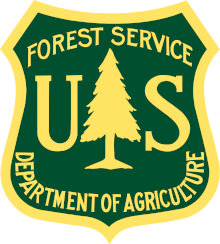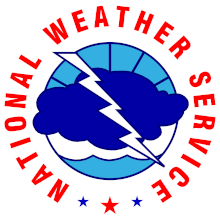You are here
Avalanche Advisory for 2013-12-29 07:06:36
- EXPIRED ON December 30, 2013 @ 7:06 amPublished on December 29, 2013 @ 7:06 am
- Issued by -
Bottom Line
The MSAC hopes you had a great holiday and wishes you a Happy New Year!
The avalanche danger on Mt Shasta's glaciers is LOW. Open bergshrunds, weak snow bridges and ice patches will be encountered on all of the glaciers. Self-arrest will likely be difficult with the current conditions. All other areas do not have enough snow to warrant an avalanche danger rating at this time.
Next week it appears that precipitation will enter the area and give us some measureable snow! Stay tuned.
Avalanche Problem 1: Normal Caution
-
Character ?

-
Aspect/Elevation ?

-
Likelihood ?CertainVery LikelyLikelyPossible
 Unlikely
Unlikely -
Size ?HistoricVery LargeLargeSmall

The avalanche danger on Mt Shasta's glaciers is LOW. Skiing on the glaciers at this time is rough and icy. Any skiing on the north or east side glaciers would be not for the faint of heart! Be cautious of open bergshrunds, crevasses, ice patches, and rock/ice fall. Self arrest may be difficult with current conditions.
Recent Observations
Mt Shasta has received no new snow over the past week and conditions continue to be the same: partly cloudy to mostly sunny and mild. Recreation has been in the form of ice skating, mountain biking, hiking, ice fishing and anthing else not on snow. Most upper elevation lakes are frozen and pretty good for skating. Castle lake on the backside (walk around), is also great for skating as of yesterday.
Dwindling, patchy and downright desperate snow conditions up to 5 inches deep can be found above 6,500 feet on shaded, northerly slopes. Other aspects are devoid of snow. Aspects that host the most snow (cold, north facing) consist of sugary, faceted snow with various near surface crusts. When the snow starts falling this winter, we will be watching these lower faceted/crust layers as they could be problematic with loads of new snow on top. The best developed facets and most snow has been seen over in the Ash Creek Butte area. This geographic cone is popular for snowmobilers and riders will need to be heads up when riding commences in Ash Creek's bowls.
Beyond the gate at Bunny Flat and the Sand Flat Winter Trails, snow is gone right now and skiing is not possible until we get more snow. For the most hard up skiers, Shasta's glaciers are the only skiing to be had in the area, or one of the long, very thin and likely rocky snow gullies on the east and north aspects.

Aerial photo of the South side of Mt. Shasta, taken 12-18-13. (Photo: H Meyers)

The North Side of Mt. Shasta with the Hotlam Glacier in center, Hotlam/Wintun ridge left, Shastina to the far right. Taken 12-18-13. (Photo: H Meyers)

The East side of Mt. Shasta, taken 12-18-13 (Photo: H Meyers)
Terrain: Remember most of the terrain that we like to play on is greater than 30 degrees. Avalanches are possible on anything steeper than 30 degrees. Avoid cornices, rock bands, terrain traps and runout zones of avalanche paths.
Weather: Most of our areas avalanche danger will occur 24-48 hours after a storm. We still can see persistent weak layers from time to time and we always will be sure to let you know about that! Heed the basic signs: Wind (significant snow transport and depositions), Temperature (rain/snow/rain/snow, which in turn weakens the snowpack), and Precipitation (Snow or rain add weight and stress to the current snowpack).
Snowpack: If snow accumulates, give the snowpack a chance to adjust to the new snow load before you play on or near steep slopes (greater than 30 degrees). Most direct action avalanches occur within 24-48 hours of recent snowfall. Watch for obvious signs of snowpack instability such as recent natural avalanche activity, collapsing of the snowpack (often associated with a “whumphing” sound), and shooting cracks. If you see these signs of instability, limit your recreation to lower angle slopes.
Human Factor: Don’t forget to carry and know how to use avalanche rescue gear. You should NOT be skiing or climbing potential avalanche slopes without having beacons, shovels, and probes. Only one person in a group should be exposed to potential avalanche danger at a time. Remember, climbing, skiing, and riding down the edge of slopes is safer than being in the center. Just because another person is on a slope doesn’t mean that it is safe. Be an individual! Make your own decisions. Heed the signs of instability: rapid warming, “whumphing” noises, shooting cracks, snowing an inch an hour or more, rain, roller balls, wind loading, recent avalanche activity.
Weather and Current Conditions
Weather Summary
In Mt Shasta City this morning at 0500, we have clear skies and an inversion in place with a current temperature of 24F.
On Mt Shasta (South Side) in the last 24 hours...
Old Ski Bowl - 7,600 feet, we have no new snow, with a snow depth total 1-2 inches in shaded and/or northerly facing aspects. The current temperature is 34F with a low of 29F and a high of 39F.
Gray Butte - 8,000 feet, the current temperature is 34F. Temps have ranged from a low of 30F to a high 37F. Winds were averaging 4-8mph from the west until mid-morning yesterday when they switched to easterly in nature and averaged 10mph until 2200. Easterly winds have picked up even more since, 20-30mph with gusts to 42mph early this morning.
Castle Lake and Mt Eddy (West side of I-5)...
Castle Lake - 5,600 feet, the current temperature is 31F with a low of 31F and a high of 37F. Castle Lake has no new snow with a current snowpack of 1-2 inches in more shaded areas and/or northerly aspects.
Mt Eddy - 6,500 feet, the current temperature is 31F with a low of 28F and a high of 38F. Winds have averaged 3 mph with gusts to 12 mph and southerly in nature. Snow depth total is about 1 inch.
THIS SEASON: Since September 1st, we have received 2.82 inches of water, normal is 15.12 inches, putting us at 18% of normal. For the month of December, Mt Shasta has received .24 inches of water with normal being 7.09 inches, which is 3% of normal. For the year, Mt Shasta has received 10.00 inches of water, normal is 42.19 inches, putting us at 23% of normal for 2013.
"Drought" and "driest" are words being spoken by weather professionals these days. It appears that we will decidedly break the record for driest calendar year on record. The 1981 to 2010 normal for water in Mt. Shasta is 43.21". Last December 2012, alone, was wetter than this entire 2013 calendar year has been (10.43")!
WEATHER SYNOPSIS:
More non-winter conditions will bring in the New Year for us. All should be getting plenty of their vitamin D fill for the next week or so with plenty of sun and clear skies. However, next week, oh yes...please Lord, next week, I'll tediously say that we will likely begin to receive some precipitation. While the climate prediction models indicate below normal precipitation for the next month, it still looks like 4-5 inches of water is expected for January and about the same for the first two weeks of February. Mother Nature's back teeth are floating we're due for a release! Stay tuned.
Check these models out... On the left is total precipitation (water) for January and on the right is total precip for the first two weeks of February.


| 0600 temperature: | 34 |
| Max. temperature in the last 24 hours: | 39 |
| Average wind direction during the last 24 hours: | East |
| Average wind speed during the last 24 hours: | 12 mi/hr |
| Maximum wind gust in the last 24 hours: | 42 mi/hr |
| New snowfall in the last 24 hours: | 0 inches |
| Total snow depth: | 0-2 inches |
Two Day Mountain Weather Forecast
Produced in partnership with the Medford NWS
| For 7000 ft to 9000 ft | |||
|---|---|---|---|
|
Sunday (4 a.m. to 10 p.m.) |
Sunday Night (10 p.m. to 4 a.m.) |
Monday (4 a.m. to 10 p.m.) |
|
| Weather | Sunny | Clear | Mostly sunny |
| Temperature (°F) | 50 | 32 | 46 |
| Wind (mi/hr) | Northeast 5-10mph | Variable 5-10mph | South 5-15mph |
| Precipitation SWE / Snowfall (in) | / 0 | / 0 | / 0 |
| For 9000 ft to 11000 ft | |||
| Sunday | Sunday Night | Monday | |
| Weather | Sunny | Clear | Sunny |
| Temperature (°F) | 48 | 32 | 43, cooling |
| Wind (mi/hr) | North 20-30mph | West 0 | West/southwest 20-30mph |
| Precipitation SWE / Snowfall (in) | / 0 | / 0 | / 0 |


























































